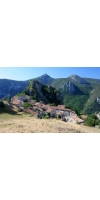Wine from Alpes-de-Haute

Vin de Pays des Alpes-de-Hautes Provence in the Southeastern part of France is home to some of the finest wines in the country. Alpes-de-Hautes is surrounded by three different departments; the Alpes-Maritimes, Var Vaucluse, and Drome. The region is characterized by varying terrains and faults. The term ‘Haute’ is given to this region because of its high landscape.
Alpes-de-Hautes-Provence is governed by Mediterranean climate. A combination of warm days, cool nights, and winds that surround the region allow for many grape varietals to grow. Grenache, Merlot, Syrah, Cabernet Sauvignon, and Chardonnay among many more are common grape varieties of Alpes-de-Hautes Provence. Aligote is also a common white grape planted in Alpes-de-Hautes-Provence and its nearby regions. Many grape varietals that produce fine wines take place in Alpes-de-Hautes-Provence.
No products found
- back
Selected Options
Regions
Categories
Pricing
Countries
Regions
Grape Types
Wineries
Organic/Free Shipping
The 2023 Far Niente Chardonnay enchants with a bouquet of citrus, white floral, and hints of honeydew melon and nectarine. Its silky texture and bright, refreshing palate dance with flavors of lemon/lime zest and lemon verbena, culminating in a long, juicy finish that leaves the palate yearning for more.
Review:
The combination of Carneros' maritime climate and the volcanic soils of Coombsville lends a hand in creating one of the most deluxe Chardonnays our team has had the pleasure of tasting. Augmented by sweet vanilla cream, elderflower, and white cherry, the mouthfeel is exquisitely graceful, and notes of key lime, herbed lemon, and luscious ripe pineapple are opulent to the end. Aged sur lie in French oak barrels.
-Tasting Panel 97 Points
Roederer Estate L'Ermitage Brut is made from 52% Chardonnay, 48% Pinot Noir.
The 2019 features aromas of quince paste and light pastry crust. The entry is bright and textured midpalate. A mouthwatering finish is highlighted by pear skin and an even, creamy texture.
Review:
If sunshine could be bottled it would be this. Aromas of fresh succulent stone fruit, a hint of yeast, citrus blossoms and notes of quince on the nose. The mousse is creamy and light with baked red apples, blood orange zest, white grapefruit, sticky caramel and layered salinity with a mouthwatering finish. It will bring a smile to your lips.
-Wine Enthusiast Cellar Selection 100 Points




